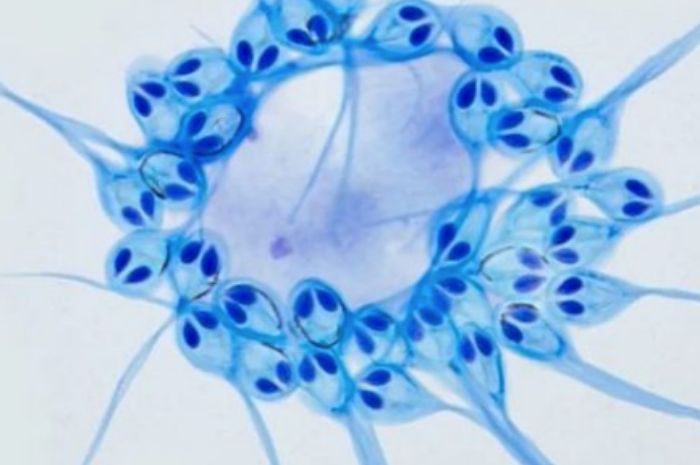Oddity Central
–
Henneguya salminicola, a parasite that looks like a tadpole.
–
Suar.ID – Henneguya salminicola, left as tadpole that infects this salmon has a rather unique superpower.
left This is called being able to survive without oxygen.
When checking Henneguya salminicola, the researchers noticed something very strange.
Quote from Oddity Central, this microscopic parasite does not appear to have a mitochondrial genome.
Mitochondria, commonly known as the “powerhouse of the cell”, are organelles that rely on oxygen to produce energy.
At first, scientists at Tel Aviv University thought it was a mistake, so they ran the analysis again, and confirmed that the parasite had no mitochondrial genome at all.
Therefore, it means that the parasite does not produce energy as all other known animals do.
“It is generally thought that during evolution, organisms became more and more complex, and that single-celled or few-celled organisms were the ancestors of complex organisms,” said Prof. Dorothee Huchon, co-author of the Henneguya study quoted from Oddity Central.
“But here, right in front of us, are animals whose evolutionary processes are opposite.”
“Living in an oxygen -free environment, he has released unnecessary genes responsible for aerobic respiration and become a simpler organism.”
Closely related to jellyfish, tadpole-like parasites live in the muscles of salmon and trout, where they cause tiny white nodules known as “tapioca disease”.
It is believed that this environment is one possible cause of mitochondrial loss.
Fish muscles are known for being in a low-oxygen environment, so Henneguya salminicola may have simply adapted to generate its energy in other ways.
What exactly drives microscopic parasites instead of oxygen remains a mystery that scientists have yet to solve.
Although microscopic images revealed mitochondria-associated organelles that retained some of the physical characteristics of the original organs, they lacked all the genetic information normally associated, indicating that the parasite was no longer capable of standard aerobic respiration.
Some researchers believe that Henneguya salminicola could somehow draw energy from the salmon’s surrounding cells, others say that it may be able to breathe without oxygen.
There are also some scientific communities that dispute the fact that this organism can spend its entire life without oxygen.
Despite the controversy surrounding the ability left to survive without oxygen, there is no denying that his discovery has changed the way we view evolution.
PROMOTED CONTENT
Featured Videos
– .


